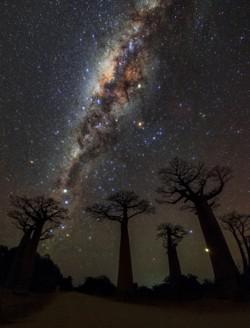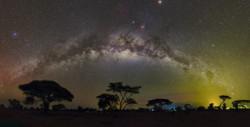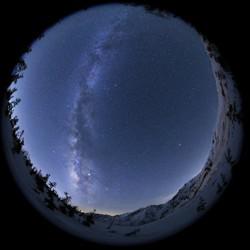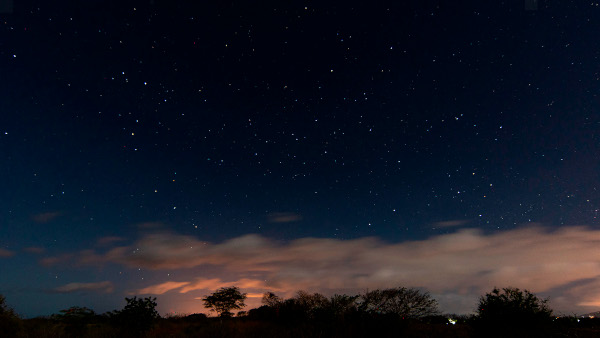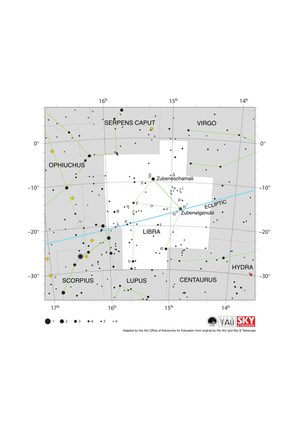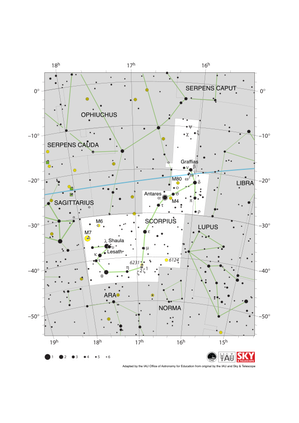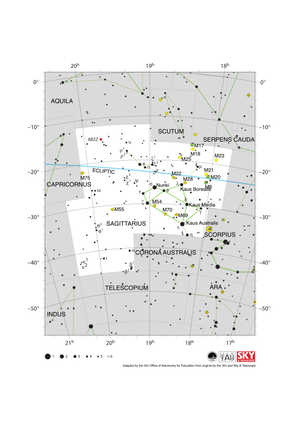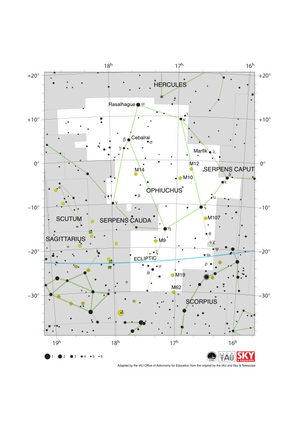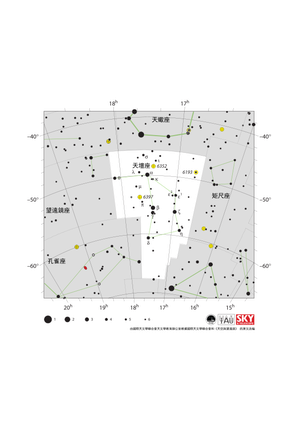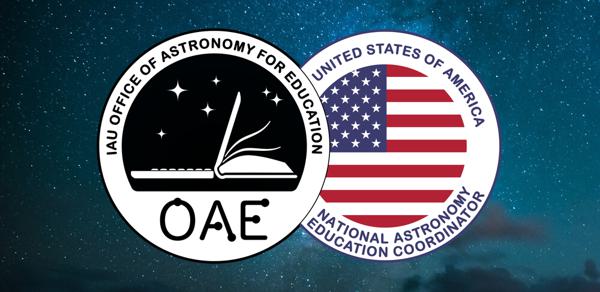Glossary term: 天蠍座
Description: 天蠍座是黃道帶上的13個星座之一。組成這個星座的恆星位於與黃道(由地球繞太陽運行的軌跡所確定的平面)相交的那部分天空。事實上,黃道帶上的所有星座都與黃道相交。從地球上看,我們會發現太陽和太陽系的其他行星經常落在天蠍座中。天蠍座是國際天文學聯合會承認的88個星座之一,也是托勒密最初確定的48個星座之一。早在托勒密之前一千多年,蘇美爾人就已經確定了天蠍座。在其他文化中,天蠍座有著不同的名稱:在毛利和波利尼西亞文化中,天蠍座被稱為毛伊的鉤子;而澳大利亞土著群體,如阿納姆地區的約爾努人,則將天蠍座視為鱷魚和蠍子。天蠍座最亮的恆星是大火星(又稱心宿二、天蠍座α),它是一顆紅巨星,距離地球約550光年。
Related Terms:
See this term in other languages
Term and definition status: The original definition of this term in English have been approved by a research astronomer and a teacher The translation of this term and its definition is still awaiting approval
This is an automated transliteration of the simplified Chinese translation of this term
The OAE Multilingual Glossary is a project of the IAU Office of Astronomy for Education (OAE) in collaboration with the IAU Office of Astronomy Outreach (OAO). The terms and definitions were chosen, written and reviewed by a collective effort from the OAE, the OAE Centers and Nodes, the OAE National Astronomy Education Coordinators (NAECs) and other volunteers. You can find a full list of credits here. All glossary terms and their definitions are released under a Creative Commons CC BY-4.0 license and should be credited to "IAU OAE".
If you notice a factual or translation error in this glossary term or definition then please get in touch.
Related Media
猴麵包樹大道上空的銀河
Credit: Amirreza Kamkar/IAU OAU
License: CC-BY-4.0 Creative Commons 姓名標示 4.0 國際 (CC BY 4.0) icons
駕駛途中
Credit: Marcin Zajac/IAU OAE
License: CC-BY-4.0 Creative Commons 姓名標示 4.0 國際 (CC BY 4.0) icons
安波塞利國家公園上空的銀河拱門
Credit: Amirreza Kamkar/IAU OAE
License: CC-BY-4.0 Creative Commons 姓名標示 4.0 國際 (CC BY 4.0) icons
橫貫天頂的銀河
Credit: Ohnishi Kouji/IAU OAE
License: CC-BY-4.0 Creative Commons 姓名標示 4.0 國際 (CC BY 4.0) icons
尼加拉瓜馬薩亞省寧迪裡鎮的星空
Credit: René Antonio Urroz Álvarez/IAU OAE
License: CC-BY-4.0 Creative Commons 姓名標示 4.0 國際 (CC BY 4.0) icons
Related Diagrams
Libra Constellation Map
Credit: Adapted by the IAU Office of Astronomy for Education from the original by IAU/Sky & Telescope
License: CC-BY-4.0 Creative Commons 姓名標示 4.0 國際 (CC BY 4.0) icons
Scorpius Constellation Map
Credit: Adapted by the IAU Office of Astronomy for Education from the original by IAU/Sky & Telescope
License: CC-BY-4.0 Creative Commons 姓名標示 4.0 國際 (CC BY 4.0) icons
Sagittarius Constellation Map
Credit: Adapted by the IAU Office of Astronomy for Education from the original by IAU/Sky & Telescope
License: CC-BY-4.0 Creative Commons 姓名標示 4.0 國際 (CC BY 4.0) icons
Ophiuchus Constellation Map
Credit: Adapted by the IAU Office of Astronomy for Education from the original by IAU/Sky & Telescope
License: CC-BY-4.0 Creative Commons 姓名標示 4.0 國際 (CC BY 4.0) icons
天壇座星圖
Credit: 由國際天文學聯合會天文教育辦公室根據國際天文學聯合會/《天空與望遠鏡》的原文改編
License: CC-BY-4.0 Creative Commons 姓名標示 4.0 國際 (CC BY 4.0) icons
